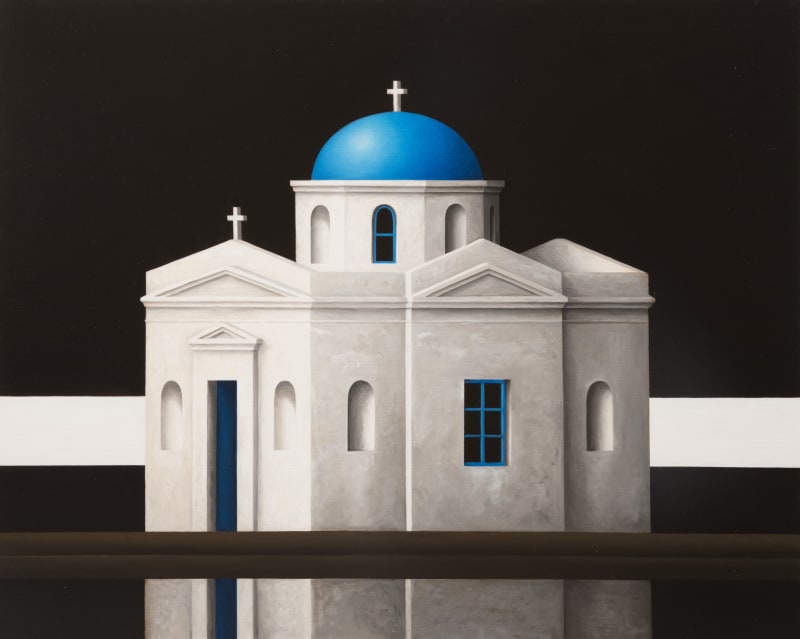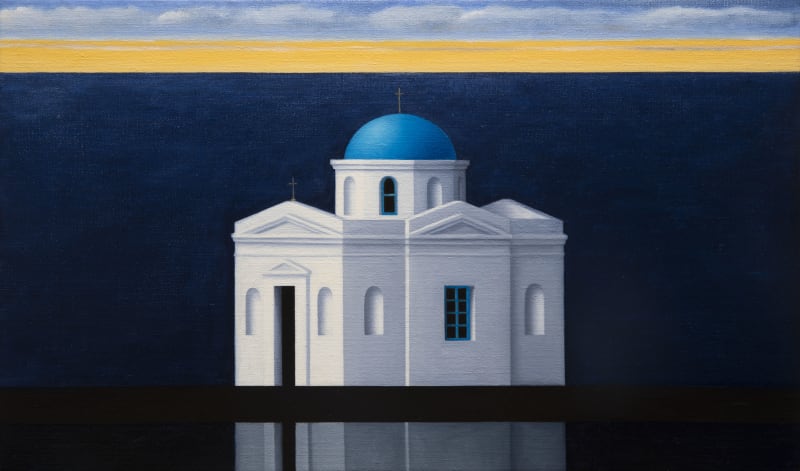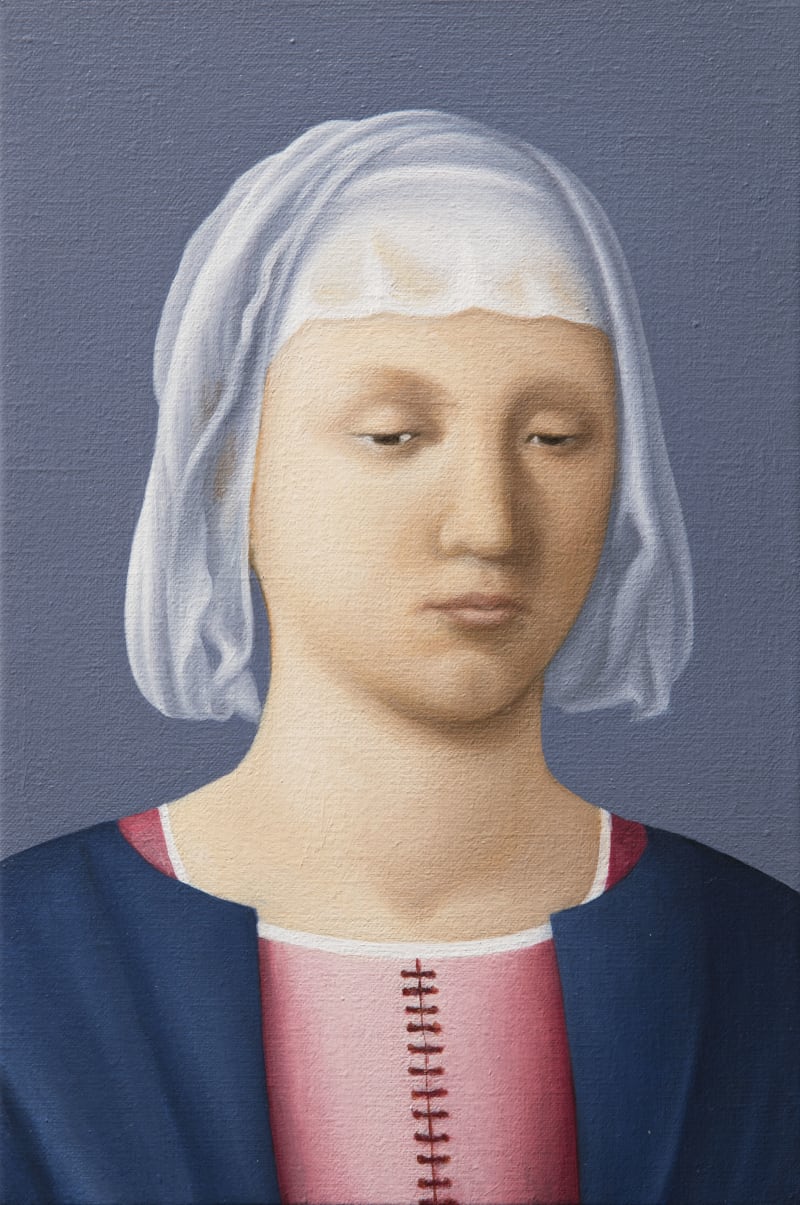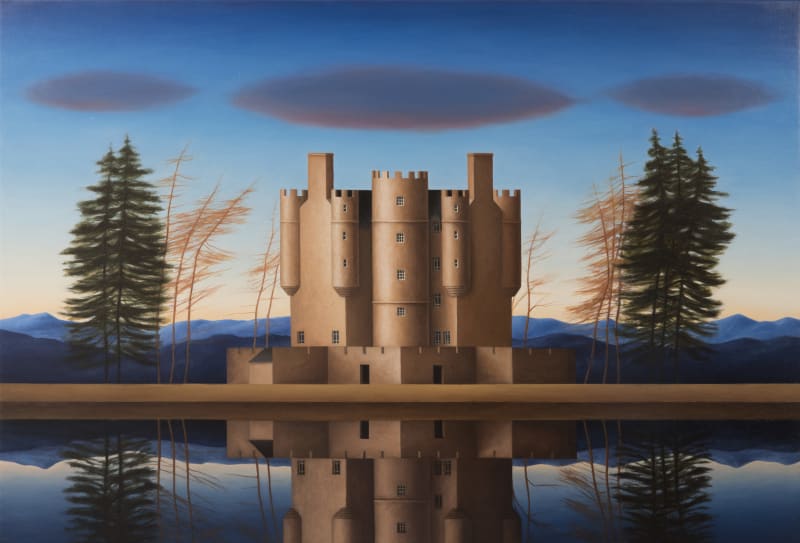Overview
Scottish artist Renny Tait is known for his painted depictions of idealised architectural landscapes, exploring the underlying geometric order of the built environment in pursuit of pure, simple form. Tait’s reconstructed cityscapes are devoid of human life, arranged in harmonious formal groupings, and guided by principles of abstraction rather than naturalism. His arrangements have often been likened to still lifes, which Tait acknowledges in his description of his process as “moving elements of sky or background as a still life painter like Morandi might move his bottles”.
Many of the buildings represented in Tait’s current exhibition are familiar London landmarks, such as Battersea Power Station, a subject to which he has returned over many years. Referring to the power station as a ‘cathedral of industry’, he draws comparisons between its grand chimneys and Greek columns or the spires of Gothic churches. In Battersea, Reflection White Stripe, a black void replaces the sky, heightening the structure’s mysterious, metaphysical properties, while the solid reflection underpinning the composition on the glass-like surface of the river below evokes a sense of the building’s towering strength.
Architectural details are simplified to highlight their classical form, (for example, the domed structure of St Paul’s Cathedral, Blue Sky, Clouds, from the Thames). Here, Tait explores ideas of memory associated with architectural form, considering the imprint of iconic buildings on the imagination and how this affects the way that we view the world around us. In Hayward Blue Sky, Tait has reconfigured the Brutalist architecture of the Hayward Gallery on London’s South Bank to include a dominant central tower. The darkened look-outs and pointed apexes of its design recall Tait’s theme of Scottish castles, which he has described as symbols of refuge and hope in a hostile environment. The lighthouse is another long-running motif, which can also be considered a haven or outpost, set against a backdrop of the seemingly infinite and untameable ocean. In Bell Rock Lighthouse, Tait captures the structure as it might have looked when it was first built, displaying an appreciation for the pleasing, and yet entirely functional, bell-like tapering design. The archetypal bright blue sky, present in many of the paintings in the exhibition, offers an opening or threshold, according to Tait, “to brighter worlds”.
While his urban and industrial landscapes recall the factory paintings of American artist Charles Sheeler, Tait’s precise lines and hard-edged shapes reflect an attentiveness to the picture’s surface more closely aligned with the concerns of modernist abstraction. According to the late author and journalist Robert Heller, Tait’s paintings, “with their virtuoso technique, bridge the worlds of classicism and abstraction. The later influences – Mondrian, Morandi, Barnett Newman – blend comfortably with the very different worlds of Bellini and Wren to form Tait’s own mysteriously depopulated universe of colour harmonies and glowing light.”
Renny Tait was born in Scotland and studied at the Edinburgh College of Art, the Royal College of Art, London, and the British School in Rome. His work is included in a number of private and public collections including the Royal College of Art and the Tate Collection.






















